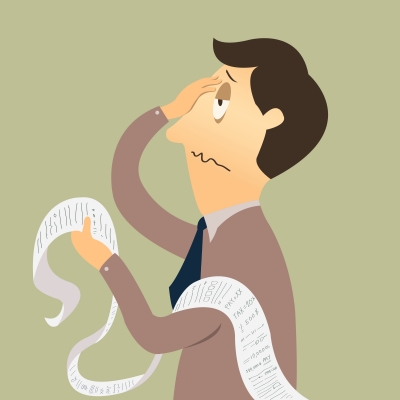
Dave Ramsey, creator of Financial Peace University and author of Total Money Makeover, has some very distinct views regarding bankruptcy. When you read his material, you will learn that he and his wife filed bankruptcy. He often describes the experience as “one of the most soul-crushing, marriage-twisting experiences in life.” He equates bankruptcy with divorce saying that “no one thinks this is a great idea.” (of course, I disagree). Given Dave’s perspective, he views it as a last resort and has built an empire around selling programs to assist people in doing whatever it takes to avoid bankruptcy.
The Bankruptcy Side of The Story.
Bankruptcy is not the cause of the emotional turmoil
I don’t quibble or dispute emotions. Emotions are real regardless of the perceived cause. However, I take issue with whether Bankruptcy is the cause. The guilt, the stress, the soul crushing experience, stems from the debt and the decisions that led to the possibility of needing to file bankruptcy. As I am fond of saying, debt ruins lives, not bankruptcy. Certainly, debtors feel guilty that they find themselves in this situation and that they need to file bankruptcy. The guilt, however, results from being in debt.
Bankruptcy provides the relief. The common threads among bankruptcy filers are these: (1) That bankruptcy was a huge relief, and (2) that almost without exception, those that file bankruptcy wish they would have done so sooner. Bankruptcy is not the cause of the emotional turmoil; bankruptcy is the release. The emotional baggage is attached to the debt and the decision made that led to bankruptcy; the emotional baggage should not be attached to bankruptcy. The financial situation is causing the stress, not the bankruptcy.
Bankruptcy saves money; you don’t have time not to file bankruptcy
Dave Ramsey’s programs related to debt are designed to avoid filing bankruptcy and get you out of debt. I don’t discount the value in exploring options. I think Dave takes the position that there is value (spiritually, emotionally, psychologically) in the struggle to get out of debt and avoid bankruptcy. In addition, the tools learned transcend avoiding bankruptcy and can be (should be) put to use in day to day life. In short, the journey is more important than the destination.
In modern society, with income stagnation in the middle class and huge debt burdens, I think Dave either misses or inappropriately discounts the opportunity cost of avoiding bankruptcy. It costs you too much money and time over the long haul to implement his programs if it is going to take years to be debt free. Keep in mind, his programs have you pay back the debt.
Opportunity cost asks this question, is what you are about to do with that money the best or optimal use of those funds? If your minimum credit card payments are $875 per month, and if you have the option with bankruptcy to wipe out that debt, is spending $875 per month the best use of those funds? I am hard pressed to think of any scenario where the answer to that question is yes. Without factoring in any return on investment, that is $31,500 over 3 years, over 5 years that is $52,500.
Now, let’s put this in perspective. If you saved $875 per month for 30 years, with a reasonable return on investment, you would have $2,069,040.00 (really). Let’s say you dilly-dally around paying debt for 10 years and thereby only save consistently for 20 years, you would only have $712,853 at the end of 20 years. By not filing bankruptcy and wiping out the debt, you cost yourself upwards of $1.3 million dollars of lifetime savings.
There is certainly value in the journey, but you should embark on that journey after you file bankruptcy and relieve yourself of the debt. You simply don’t have time. It is a waste of your limited resources to pay down the debt. You can’t get that money back. Think of it like this, every dollar you spend on debt costs you about $7 over a 30 year period. When you make that $300 credit card payment, you are costing yourself $2,100.
Bankruptcy is your right
Bankruptcy is specifically authorized by the U.S. Constitution. Bankruptcy was our founding fathers alternative to debtors’ prison that England used. Bankruptcy is the most powerful debt relief tool because it forces the issue. It forces your creditors to forgive debt (which they used to be obligated to do, Deuteronomy 15:1). Ultimately, bankruptcy is about forgiveness.
Society wants you to be a contributing member and have the chance and ability to take care of yourself over your lifetime. Debt gets in the way.
Bankruptcy needs to be the first choice, not the last resort. The guidelines I use are these:
- Will it take you longer than 2 years to get out of debt?
- Is your total unsecured debt to annual income ratio greater than 30%?
If you can answer yes to either of the above questions, you need to be looking at bankruptcy. It will cost you too much time and money not to file bankruptcy.
http://www.daveramsey.com/article/bankruptcy-seven-things-to-know/lifeandmoney_bankruptcy/
http://www.daveramsey.com/article/the-basics-of-bankruptcy/lifeandmoney_bankruptcy/
